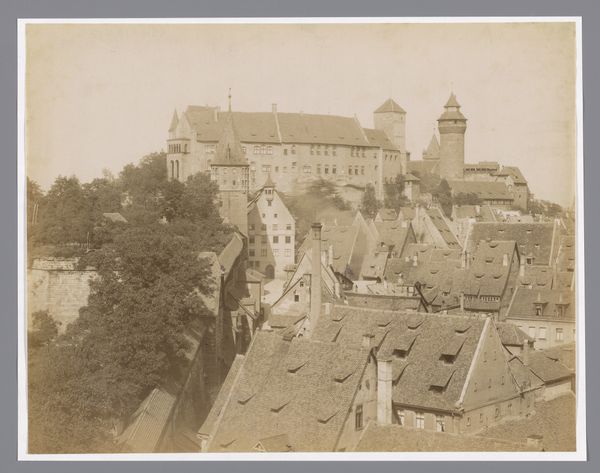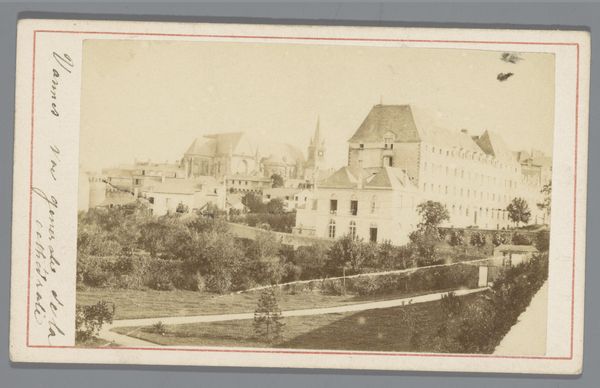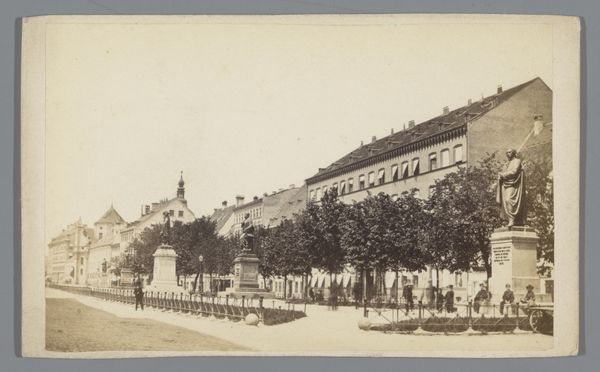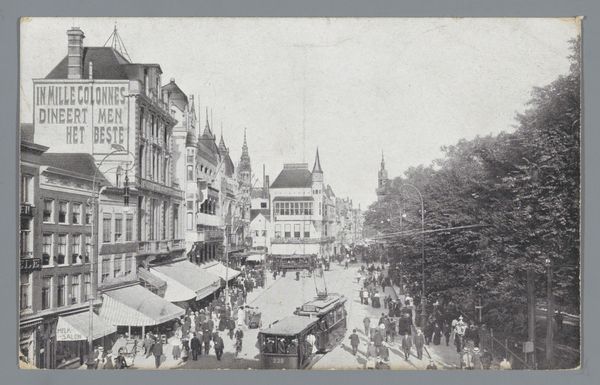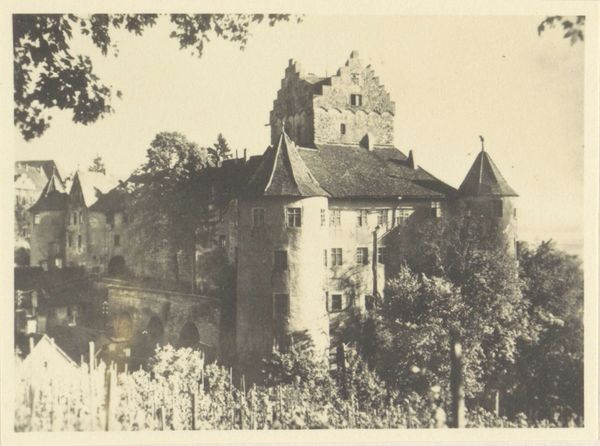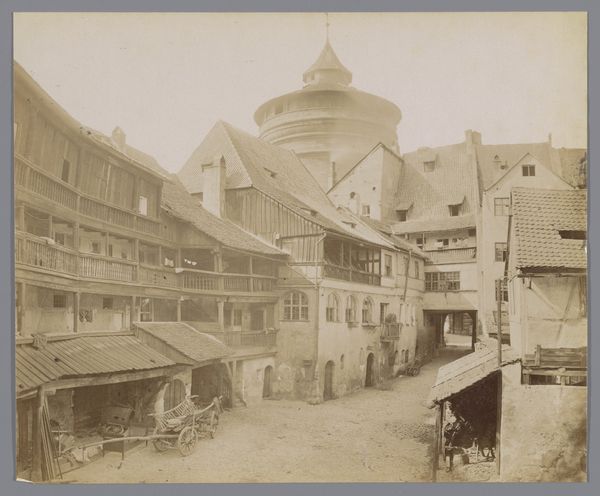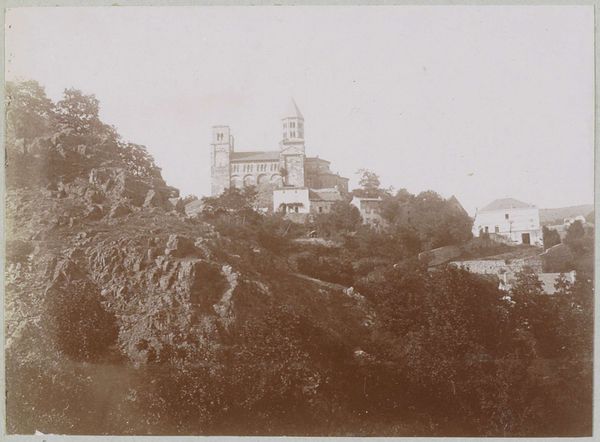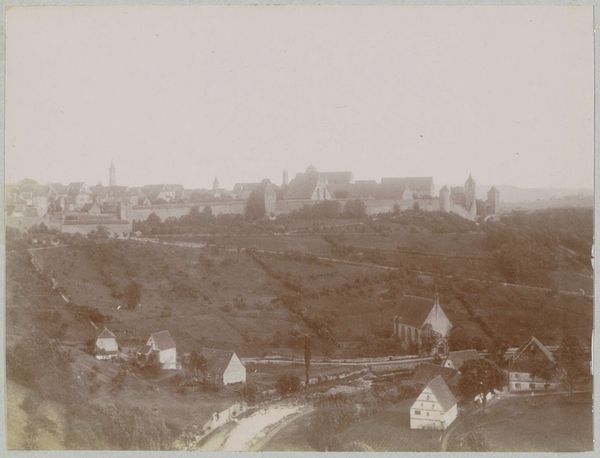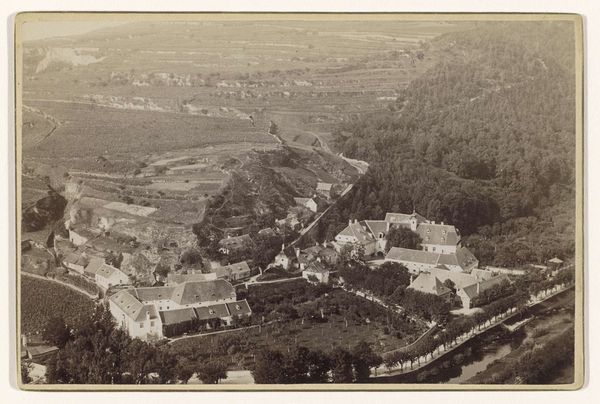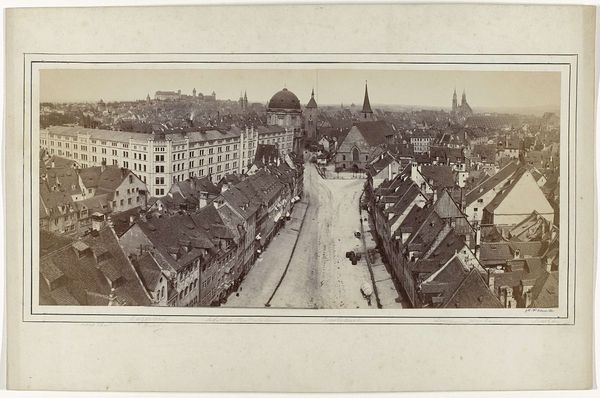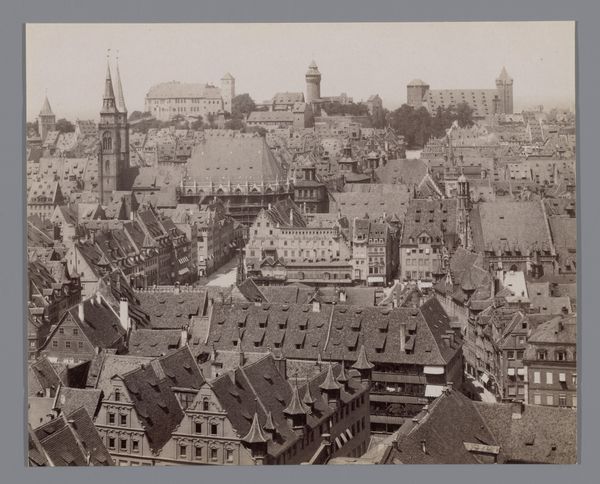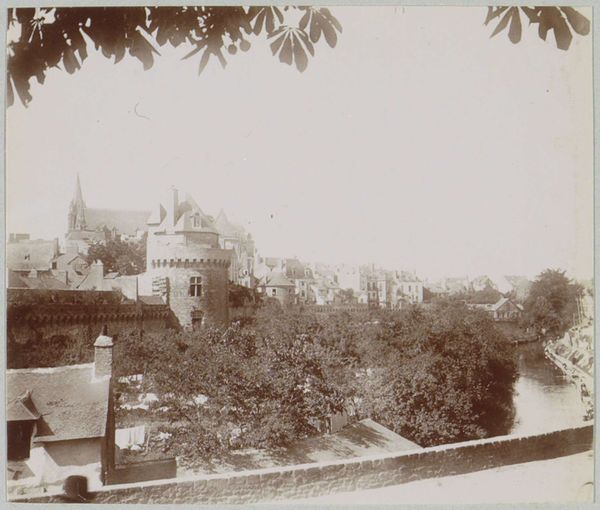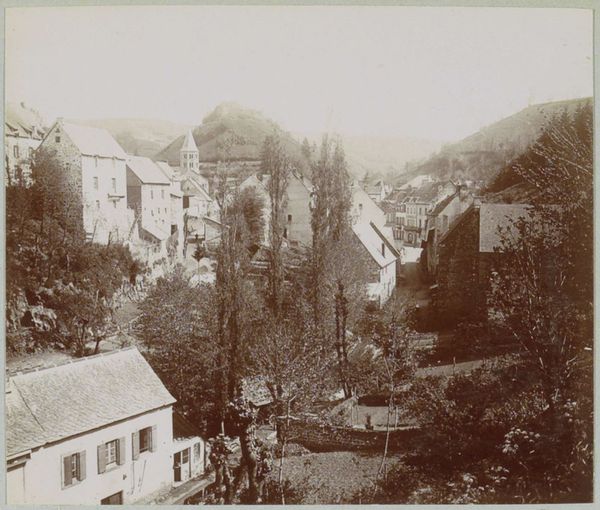
print, photography, gelatin-silver-print
# print
#
landscape
#
street-photography
#
photography
#
gelatin-silver-print
#
cityscape
#
watercolor
#
realism
Dimensions: height 208 mm, width 270 mm
Copyright: Rijks Museum: Open Domain
Curator: Standing before us is "Gezicht op Neurenberg," a gelatin-silver print made by Ferdinand Schmidt in 1891. It offers a detailed view of the cityscape. Editor: It's melancholic, isn't it? That sepia tone drenches everything, and the soft focus gives it a dreamlike quality, as if we're looking at a memory fading over time. Curator: Indeed. Schmidt's choice of the gelatin-silver process allowed for a wide range of tones and incredible detail. Think about the chemical processes, the darkroom labor—transforming this medieval cityscape into a commodity intended for viewing. Editor: It's striking how he uses this emerging technology to document a place already steeped in history. Nuremberg was, of course, a hugely significant city of the Holy Roman Empire. The photograph almost monumentalizes the established order. Consider how this image might have been circulated, seen in exhibitions or even as a tourist keepsake, reinforcing a particular view of German heritage. Curator: And the angle is deliberate. Shooting from this slightly elevated vantage point, Schmidt controls the viewer’s gaze, carefully framing a network of rooftops and towers that almost appear organic, highlighting the sheer density of the built environment. It showcases a specific kind of industry and craft inherent to constructing and inhabiting such a place. What about the hidden infrastructure that the buildings rest upon, the walls that are visible, hinting to their social construction through materials? Editor: Good point. And the timing is crucial; 1891 is on the cusp of massive industrial and social changes in Germany. This image is in direct dialogue with transformations, possibly serving as a reminder of past certainties and aesthetic pleasures within times of anxieties that accelerated industrialization provoked at the time. This particular view, chosen, curated, and consumed by audiences—it's not just a photograph of a city; it's a cultural artifact embedded in specific social relations and historical narratives. Curator: Looking at it now, I'm particularly drawn to the physical artifact itself: the paper, the silver emulsion, the way it has aged and acquired its subtle imperfections. These characteristics highlight photography's inherent materialism. Editor: Ultimately, what this work shows, or maybe allows to speculate, is the enduring power of photography to both document and construct a collective memory. Curator: A powerful reflection. Thank you.
Comments
No comments
Be the first to comment and join the conversation on the ultimate creative platform.
